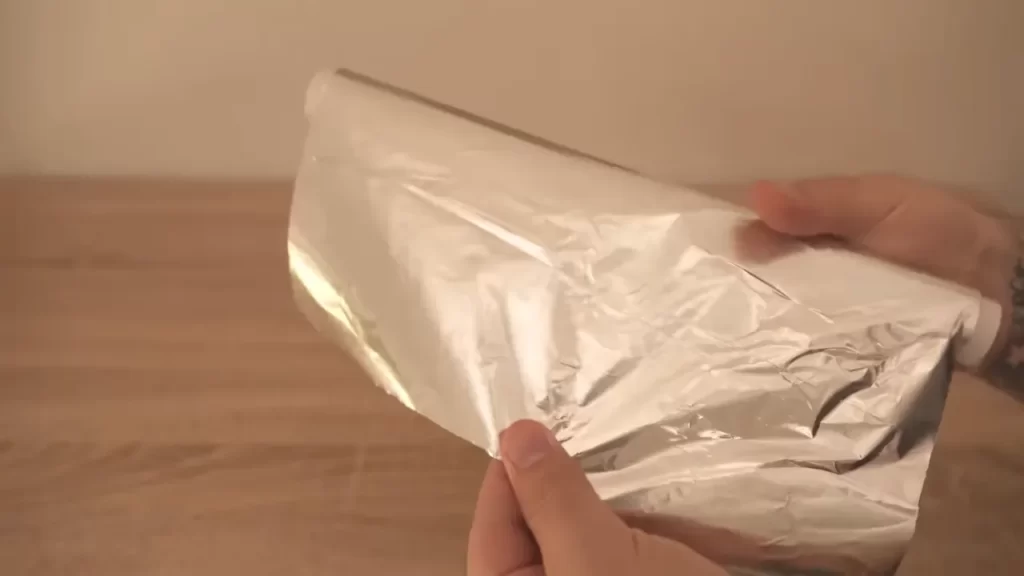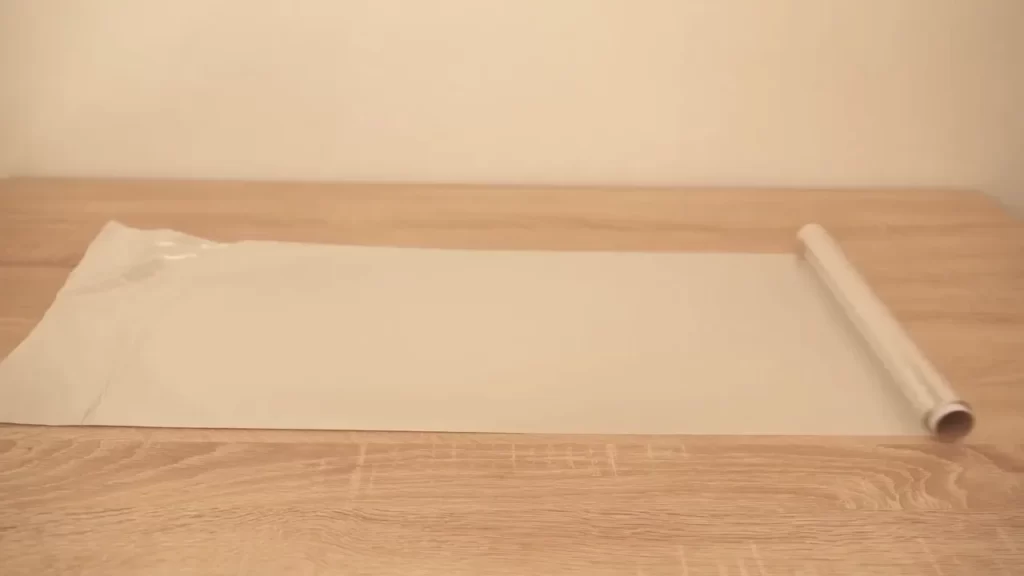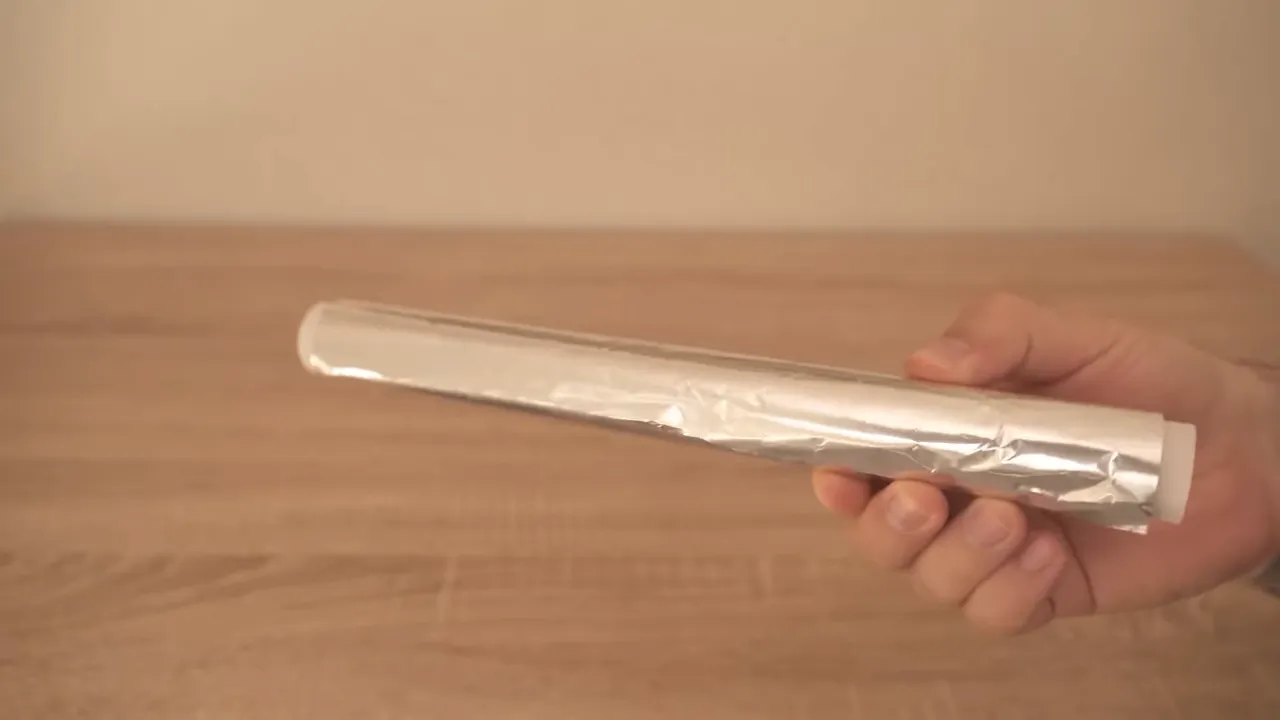Birds, while admired for their beauty and song, can sometimes pose challenges when they decide to perch or nest in undesirable places around our homes or gardens. Aluminum foil, a common household item, has been touted by many as an effective tool in keeping these feathered creatures at bay. But does it really work?
Yes, aluminum foil can act as a deterrent for birds. The reflective nature and the noise it produces when moving can make birds feel uneasy, causing them to avoid areas where foil is present. However, its effectiveness varies and may not be a long-term solution.
Bird deterrent methods are diverse, and while aluminum foil might be a choice for some, it’s essential to recognize its strengths and limitations. When seeking methods to deter birds, understanding how these solutions work is crucial to making an informed decision.
Aluminum Foil: The Basics
Composition and properties
Aluminum foil, commonly found in most kitchens, is a thin sheet made of aluminum. While it’s lightweight, it possesses a unique set of properties that make it stand out:
- Malleability: One of aluminum’s defining characteristics is its ability to be rolled into thin sheets without breaking.
- Durability: Despite its thinness, it’s resistant to many forms of damage, such as light, oxygen, and moisture. This quality makes it a preferred packaging material.
- Thermal Conductivity: Aluminum efficiently conducts heat, which is why it’s often used for cooking.
Reflective nature and noise creation
Aluminum foil’s shiny surface reflects light. When hit by sunlight or any other source of light, it produces bright, glaring reflections. Furthermore, the crinkling and rustling sounds made when the foil is moved or disturbed are unique. This combination of light reflection and noise generation is particularly significant when considering bird deterrence.

How Birds Perceive Aluminum Foil
Birds’ visual capabilities
Birds are gifted with keen vision, often superior to humans in many respects. They can see a broader spectrum of colors and can detect rapid movements quicker than the human eye. This enhanced visual capability allows them to navigate the skies and spot predators or prey from great distances. Their sensitivity to visual stimuli also means they react strongly to sudden bright flashes or movements.
Their reaction to light reflections
The bright glares produced by reflective materials, like aluminum foil, can be disorienting and frightening to birds. In the wild, sudden flashes of light are often associated with water surfaces, predators, or other dangers. So, when birds encounter unpredictable reflections from aluminum foil, their instinct is to avoid the area.
Noise sensitivity in birds
Birds are highly attuned to their auditory environment. They rely on sounds for communication, finding food, and detecting threats. The rustling and crinkling of aluminum foil produce unfamiliar sounds that can be startling to birds, making them hesitant to approach.

Using Aluminum Foil Effectively
Best practices for foil placement
To maximize the deterrence effect of aluminum foil against birds:
- Height and Location: Hang strips of foil where birds are problematic – from tree branches, balcony railings, or other elevated spots.
- Length: Longer strips can flutter more, creating both movement and noise.
- Looseness: Avoid fastening the foil too tightly. It needs to move freely to be effective.
Creating moving elements with foil
The more movement you can introduce, the better. Consider:
- Twisting the foil: This allows it to spin and move in the wind.
- Pairing with strings: Attaching foil to strings or threads can create a mobile-like deterrent, increasing the movement.
Combining foil with other repellents
For heightened effectiveness, you can combine aluminum foil with other bird-repelling techniques:
- Reflective objects: Items like CD discs or small mirrors can enhance reflective deterrence.
- Sounds: Devices that produce predatory bird calls or distress signals can be used alongside foil to scare away unwanted birds.

Advantages of Using Aluminum Foil
Eco-friendly solution
Aluminum foil poses no threat to the environment. It’s recyclable and doesn’t release harmful chemicals, making it a green option for bird control.
Cost-effective method
Compared to many commercial bird repellents or deterrent devices, aluminum foil is inexpensive. Most households already have it, eliminating the need for an additional purchase.
Easily available material
One of the significant advantages of using aluminum foil as a bird deterrent is its availability. It’s a staple in most kitchens, making it an easily accessible tool for immediate use.
Limitations of Aluminum Foil
Temporary solution
While aluminum foil can be an effective deterrent, it’s important to note that it’s often a short-term solution. Birds are intelligent creatures. Over time, they might recognize that the reflective surface and the noise it makes are harmless, reducing the deterrent’s effectiveness.
Weather considerations
Aluminum foil’s efficiency can be compromised by various weather conditions:
- Wind: Strong winds can tear or blow away loosely hung foil strips.
- Rain: Wet foil loses its rustling sound, which is a key deterrent factor.
- Sunlight: Without direct sunlight, the foil’s reflective properties are diminished.
Aesthetics and visual appeal
Let’s face it; aluminum foil strips hanging around your property might not be the most visually pleasing solution. They can detract from the aesthetics of a well-maintained garden, balcony, or outdoor space.
Other Bird Deterrent Options
Ultrasonic devices
These devices emit high-frequency sounds that are unpleasant for birds but are mostly inaudible to humans. They’re electronic and can cover a broad area, making them suitable for larger properties.
Bird spikes and nets
These are physical barriers that prevent birds from landing or nesting:
- Bird spikes: These are rows of upward-pointing spikes installed on ledges, signs, or any flat surfaces where birds might land. They discourage perching but don’t harm the birds.
- Nets: Useful for protecting larger areas like gardens, orchards, or building facades. They prevent birds from accessing the area entirely.
Natural bird repellents
Natural solutions can also help deter birds:
- Predator decoys: Models of owls, hawks, or snakes can keep smaller birds at bay as they mimic natural predators.
- Scented oils: Some essential oils, like peppermint or eucalyptus, can act as bird repellents when sprayed around areas you want to protect.
Tips for Safe Bird Deterrence
Avoiding harm to birds
It’s paramount to ensure that bird deterrence methods do no harm:
- No poison: Using toxic substances can kill birds and other non-target animals.
- Check nets regularly: Ensure no birds are trapped or tangled. Free any caught birds gently and promptly.
- Safe placement: Ensure deterrent devices, especially spikes or electronic devices, are placed where birds won’t get injured.
Ethical considerations
Birds play a crucial role in our ecosystem. They help control pests, pollinate flowers, and spread seeds. Therefore, it’s essential to treat them with respect:
- Humane methods: Always opt for solutions that deter birds without causing them distress or harm.
- Awareness: Understand that birds might be seeking food, water, or shelter. Sometimes, simple changes, like moving a food source, can reduce bird visits.
Legal guidelines and protections
Many bird species are protected by law. Before implementing any bird control measures, it’s crucial to:
- Know the species: Some birds have legal protections. Deliberately harming them can lead to hefty fines or legal actions.
- Local guidelines: Check with local wildlife agencies or authorities about guidelines for bird deterrence in your area.
Frequently Asked Questions
Why do birds dislike aluminum foil?
Birds are sensitive to bright reflections and unfamiliar noises. Aluminum foil combines these two elements, making it an unsettling environment for them.
Can aluminum foil harm birds?
No, aluminum foil itself is not harmful to birds. However, it’s crucial to ensure that the foil isn’t positioned in a manner where birds could become entangled or trapped.
How long does aluminum foil deterrence last?
Aluminum foil is a temporary deterrent. Its effectiveness diminishes over time, especially when birds become accustomed to it or when it deteriorates due to weather conditions.
Are there other household items that deter birds?
Yes, objects like CDs, wind chimes, or even old DVDs can act as bird deterrents due to their reflective surfaces and noise-making capabilities.
Conclusion
Aluminum foil can serve as a temporary and cost-effective bird deterrent, leveraging its reflective nature and noise-making ability to unsettle birds. However, its efficacy is not guaranteed and may vary depending on specific circumstances. As with any deterrent method,
it’s always essential to prioritize the safety and well-being of the birds while finding solutions to manage them in human spaces. Finding a balance between human convenience and respecting wildlife remains an ongoing endeavor in our shared environment.
